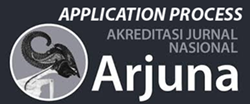Mapping Potential Agriculture Sectors In The SULAMPUA Region As An Impact of Capital City of Nusantara Development
DOI:
https://doi.org/10.59653/jbmed.v2i02.740Keywords:
input-output, multiplier, demand, linkages, IRO, economic developmentAbstract
The development of Capital City of Nusantara (IKN), which is geographically closer to the SULAMPUA region, expected trigger the SULAMPUA economy, especially the agricultural sector. This study aims to determine the potential agricultural sector in the SULAMPUA region due to IKN development. The study uses IRIO (Inter-Regional Input-Output) from Statistics Indonesia in 2021, specifically for seven agricultural sub-sectors. The SULAMPUA region comprises ten provinces, with the Golden Triangle region comprising South Sulawesi, Central Sulawesi, and West Sulawesi. The results of the study show that no agricultural industry is a strategic sector in the SULAMPUA. Based on the criteria set out in the research, no sector falls into the category of very potential to be developed. The potential sectors to be developed in the SULAMPUA Region are (1) food crops; (2) seasonal and annual plantation crops; (3) livestock; (4) forestry and logging; and (5) fishery. Local governments need to consider policies related to potential agricultural sectors. Because the agricultural sector is a labor-intensive and the availability of resources.
Downloads
References
Atthahara, H., & Rizki, M. F. (2019). Analisis Tentang Rencana Tata Ruang Wilayah Dan Dampak Kebijakan Pengembangan Kawasan Industri Bagi Masyarakat Sekitar Di Kabupaten Karawang. The Indonesian Journal Of Politics And Policy, 1(1). https://doi.org/10.35706/ijpp.v1i1.1642
Brika, S. K. M., Adli, B., & Chergui, K. (2021). Key Sectors in the Economy of Saudi Arabia. Frontiers in Public Health, 9. https://doi.org/10.3389/fpubh.2021.696758
Desiyanti L, N. P. A. (2020). Analisis Keterkaitan Sektor Pertanian Dan Pengaruhnya Terhadap Perekonomian Indonesia (Analisis Input Ouput). Jurnal Ilmiah Satyagraha, 3(2). https://doi.org/10.47532/jis.v3i2.178
Girik Allo, A., Dwiputri, I. N., & Maspaitella, M. (2022). The impact of electricity investment on inter-regional economic development in Indonesia: An Inter-Regional Input-Output (IRIO) approach. Journal of Socioeconomics and Development, 5(1). https://doi.org/10.31328/jsed.v5i1.2775
Gok, B., & Akseki, U. (2022). Assessment of Tourism Sector for Turkish Economy: An Input – Output Analysis. Cankiri Karatekin Universitesi Iktisadi ve Idari Bilimler Fakultesi Dergisi. https://doi.org/10.18074/ckuiibfd.1010260
Hirschman, A. O. (1959). The Strategy of Economic Development. Yale University Press, New Haven.
Lee, H., & Hlee, S. (2021). The intra-and inter-regional economic effects of smart tourism city seoul: Analysis using an input-output model. Sustainability (Switzerland), 13(7). https://doi.org/10.3390/su13074031
Li, J., Fang, H., Fang, S., Zhang, Z., & Zhang, P. (2021). Embodied energy use in china’s transportation sector: A multi-regional input–output analysis. International Journal of Environmental Research and Public Health, 18(15). https://doi.org/10.3390/ijerph18157873
Liu, M., Huang, X., Chen, Z., Zhang, L., Qin, Y., Liu, L., Zhang, S., Zhang, M., Lv, X., & Zhang, Y. (2021). The transmission mechanism of household lifestyle to energy consumption from the input-output subsystem perspective: China as an example. Ecological Indicators, 122. https://doi.org/10.1016/j.ecolind.2020.107234
Ojaleye, D., & Narayanan, B. (2022). Identification of Key Sectors in Nigeria – Evidence of Backward and Forward Linkages from Input-Output Analysis. SocioEconomic Challenges, 6(1). https://doi.org/10.21272/sec.6(1).41-62.2022
Pasaribu, E., Priyarsono, D. S., Siregar, H., & Rustiadi, E. (2014). Dampak Spillover Pusat-Pusat Pertumbuhan di Kalimantan. Jurnal Ekonomi Dan Kebijakan Publik, 5(2).
Prihawantoro, S., Tukiyat, T., & Nuraini, A. (2019). Peranan Sektor Teknologi Informasi dan Komunikasi dalam Perekonomian Indonesia dengan Pendekatan Analisis Input-Output. Jurnal Administrasi Dan Manajemen, 9(1).
Rahmawan, I. M., & Angraini, W. (2021). Keterkaitan Antar Sektor dan Antar Wilayah dalam Perekonomian Provinsi Lampung: Analisis Data Tabel Inter Regional Input Output (IRIO) Tahun 2016. Jurnal Ekonomi Dan Statistik Indonesia, 1(3). https://doi.org/10.11594/jesi.01.03.09
Ronalia, P. (2021). Potensi Hilirisasi Industri di Provinsi Riau (Perspektif Tabel Interregional Input Output). Jurnal Ekonomi Dan Statistik Indonesia, 1(3). https://doi.org/10.11594/jesi.01.03.06
Tajerin, T., Kurniawan, T., & Wicaksana, M. N. (2015). Dampak Peningkatan Investasi Untuk Pengembangan Industri Pengolahan Produk Perikanan Indonesia Terhadap Perekonomian Nasional. Buletin Ilmiah Marina Sosial Ekonomi Kelautan Dan Perikanan, 1(2). https://doi.org/10.15578/marina.v1i2.2075
Tajerin, T., Manadiyanto, M., & Sastrawidjaja, S. (2017). Dinamika Keterkaitan Sektor Kelautan Dan Perikanan Dalam Perekonomian Indonesia,, 1995-2005: Pendekatan Rasmussen’s Dual Criterion. Jurnal Sosial Ekonomi Kelautan Dan Perikanan, 5(1). https://doi.org/10.15578/jsekp.v5i1.5794
Yusa, I. G. P. D. (2020). Analisis Keterkaitan dan Dampak Permintaan Akhir Terhadap Sektor Produksi Pangan di Indonesia. Seminar Nasional Official Statistics, 2019(1). https://doi.org/10.34123/semnasoffstat.v2019i1.172
Downloads
Published
How to Cite
Issue
Section
License
Copyright (c) 2024 Ernawati, Syamsir Nur, Mansyur Asri

This work is licensed under a Creative Commons Attribution-ShareAlike 4.0 International License.
Authors who publish with this journal agree to the following terms:
- Authors retain copyright and grant the journal right of first publication with the work simultaneously licensed under a Creative Commons Attribution-ShareAlike that allows others to share the work with an acknowledgement of the work's authorship and initial publication in this journal.
- Authors are able to enter into separate, additional contractual arrangements for the non-exclusive distribution of the journal's published version of the work (e.g., post it to an institutional repository or publish it in a book), with an acknowledgement of its initial publication in this journal.
- Authors are permitted and encouraged to post their work online (e.g., in institutional repositories or on their website) prior to and during the submission process, as it can lead to productive exchanges, as well as earlier and greater citation of published work (See The Effect of Open Access).





























